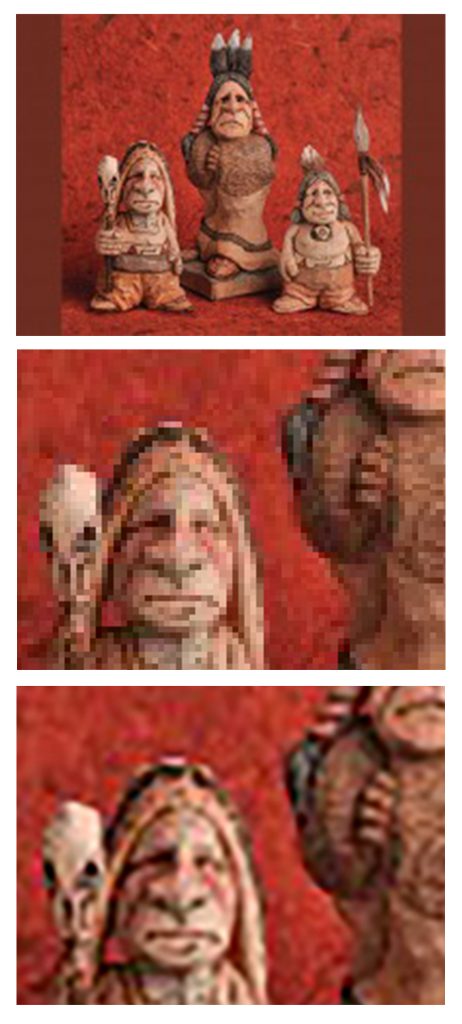By Jon Deck

The top photo represents a photo at the correct resolution–300 dpi for the magazine. The middle photo shows what happens when you enlarge or publish a low resolution photo; it pixilates. The bottom photo demonstrates trying to turn a low resolution photo into high res image via a Photoshop conversion.
I am constantly sought out to evaluate images that are sent to us by contributors. And the first thing I look for is the resolution of the photo. Many times we receive images that are far too low in resolution to meet the quality of our printed publications. What works for the web invariably does not work for the press. The print specification for images is 300 dpi, while web images are usually 72 dpi.
What’s a dpi?
It stands for dots per inch, a printing term that relates to the dots of ink colors that make up a CMYK image. That term is fairly interchangeable with ppi, or pixels per inch. Pixels are those blurry color squares that you see when you blow up a digital image on your computer screen as far as it will go. It’s fascinating to see how all those squares make a photo. But if pixels are visible in a print image, it is unacceptable. Because most computer screens have a matrix that plays well with 72 ppi images, those pixels are relatively seamless. But the fineness of the dot pattern of a printing press demands a higher resolution.
Example: Say you have a square area that can hold 72 building blocks, and that same area can be filled with 300 dice. The relative size of the blocks and dice are the same between pixels at 72 and 300 ppi.
How do I get a 300 dpi image?
Oh, I know—I can go into Photoshop and increase the resolution to 300 dpi. DON’T YOU DARE. The result of your effort will be an enlargement of the 72 ppi pixel arrangement broken down into smaller pixels producing a muddy image not fit for web or print. The only way to achieve a high resolution image is to take one. In your digital camera settings there is a place to control image size. If you’re shooting for a print publication always choose the highest image size possible. Remember, you can always reduce the size of an image, but you can never increase it. This is a resolution you can keep.
Now…go get that bag of chips you’ve been avoiding.
For more great photo tips, click here to check out our YouTube series.






